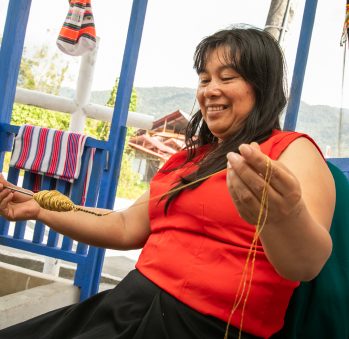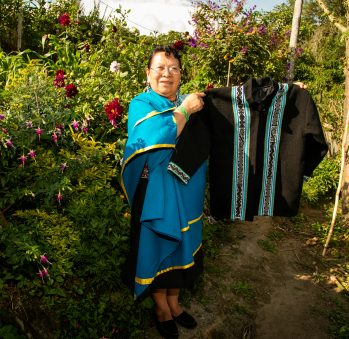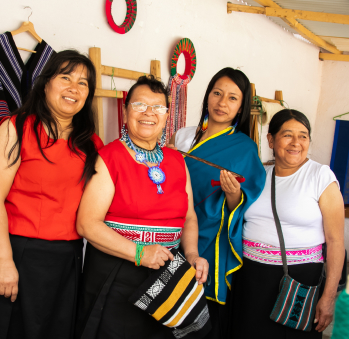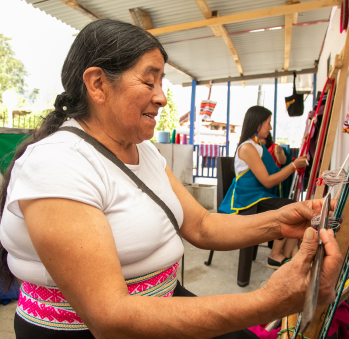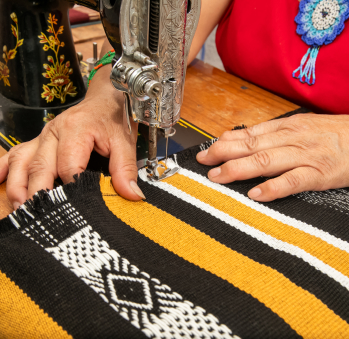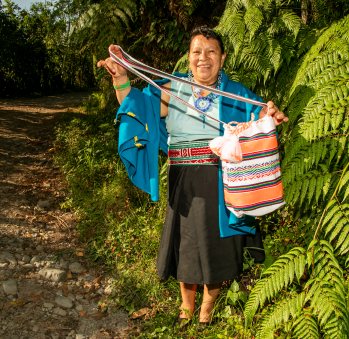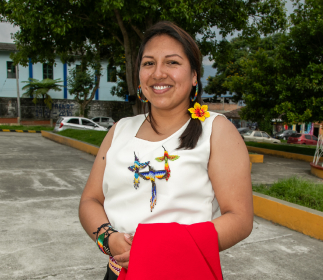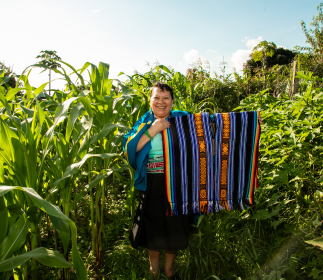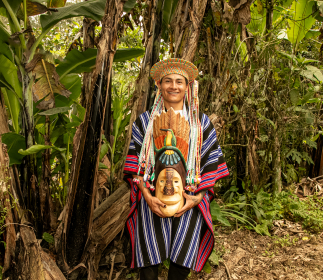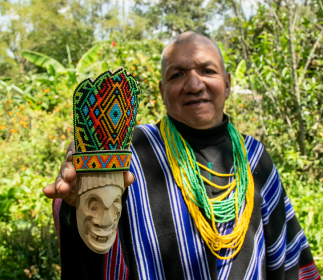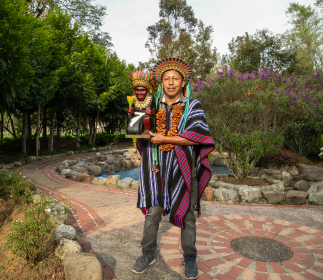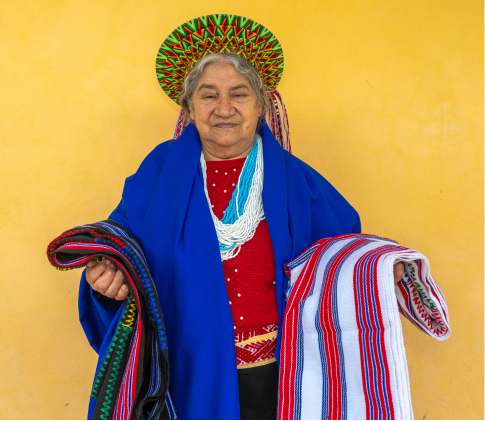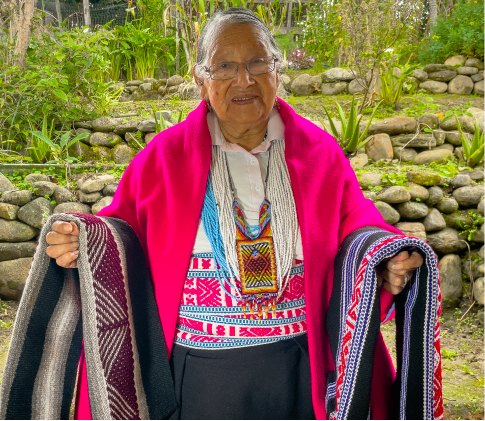Carmela Agreda
Workshop: Asociación binchioka
Craft: Tejeduría
Trail: Putumayo Route
Location: San Francisco, Putumayo
Carmela knows she is curious. And now, after so many years, sixty to be exact, she’s grateful for it. She remembers asking her grandparents and parents, from an early age, what they were doing, why they were doing it, and what purpose it served. Of course, she also wanted to know the meanings of the objects that later, as she came to understand, defined her Kamentsá community in Alto Putumayo. One of her earliest memories is at the age of five, watching her family load baskets of various sizes, each serving a different function: storing clothes, going to the chagra to collect vegetables, or gathering firewood from the forest. When it was for firewood, the container was made from a dark and unbreakable vine. Alongside these memories of basketry are the older women, the mothers of her community, whom she saw weaving everything that was worn in her village – the woolen shawls and the sashes to tie the blanket with which they kept warm and celebrated the Great Day.
From them, she learned what she knows, and to them she owes it all. From obtaining the wool fleece sheared in Pasto, as there were no sheep in her territory, to carding and dyeing it black with native plants, using the traditional Kamentsá methods. Above all, she has engraved in her memory the immense work done by the women of her community. And the disdain for the craft: it was said that sitting down to weave was for “lazy” people, instead of sweating in the tasks of planting and harvesting. That’s why she saw the women in her life working from sunrise to sunset, farming during the day to be able to weave the blankets they would wear and sleep in at night and in the early mornings. She herself, as a little girl, would stay up weaving little belts to help her mother with the tasks. Today, she’s thankful that craftsmanship has improved in quality and is valued for what it is; they no longer have to exchange it for food as they did in the past, but can live off of it. In fact, craftsmanship allowed her to educate her four children.
She became a master weaver in the guanga loop, as skilled as her teachers, and she knows that when she intertwines the threads, she tells a story – the story of her origin. One that fills her with pride and that she has passed down to her children as her greatest treasure. Even if, in the process of getting to know it, she had to endure all sorts of humiliations because it wasn’t exactly what Western education expected of her. She clearly recalls the scoldings from the nuns when she was a child, the blows against the desk pulling her hair because she couldn’t pronounce the “r” properly. And her classmates weren’t any better, the white children who mocked her attire, pulled her ears, and spat at her… oh, the story of our country… But that painful bitterness fades into the background when she thinks about how she marveled at hearing the older women express their ancestral knowledge. They might not have known how to read, but they wrote in symbols that spoke of the land, the sun and the moon, and the cycles of nature, just as they wove the sashes they would wear on different occasions, as festive as they were ceremonial, even preparing the sash that would accompany them in their own deaths.
Just as important as the transmission of their symbols, is the preservation of the mother tongue. Overcoming the shame that for years many tried to instill in the language, to make them forget the words that uphold their world and beliefs. She has made the recovery of learning her dialect a lifelong crusade. That’s why when she greets people, she says she’s part of the Kamentsá Biyá Council, meaning she’s a speaker. When she looks back on her life, having taught her children their origins and knowing that her daughter Jane Martina will be the inheritor of her guanga weaving knowledge, she feels fulfilled. She also knows that the task must continue with the little ones, the grandchildren, so that there are other girls and boys who, like she did, fall in love with their culture at the age of five, and continue to enrich the meadow with the beauty of their roots.
Craft



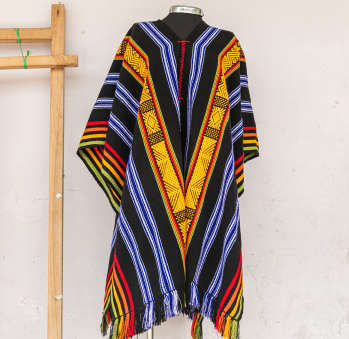
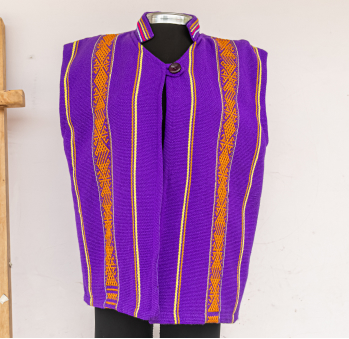
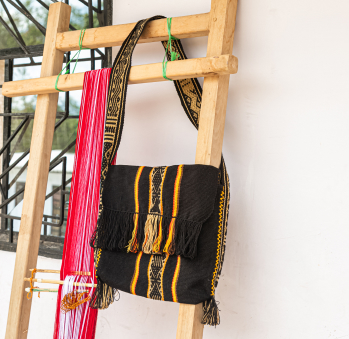
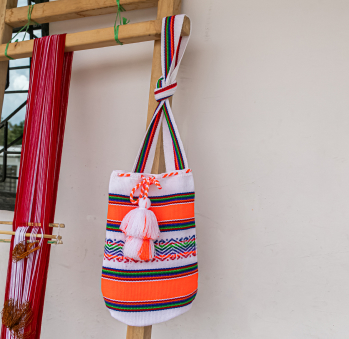

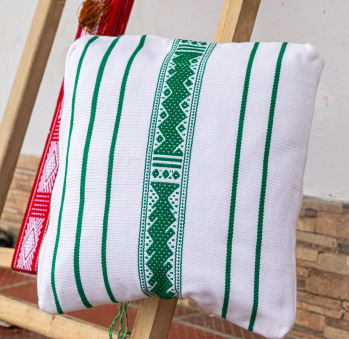









Artisans along the way
Artisans along the way
No puede copiar contenido de esta página








































